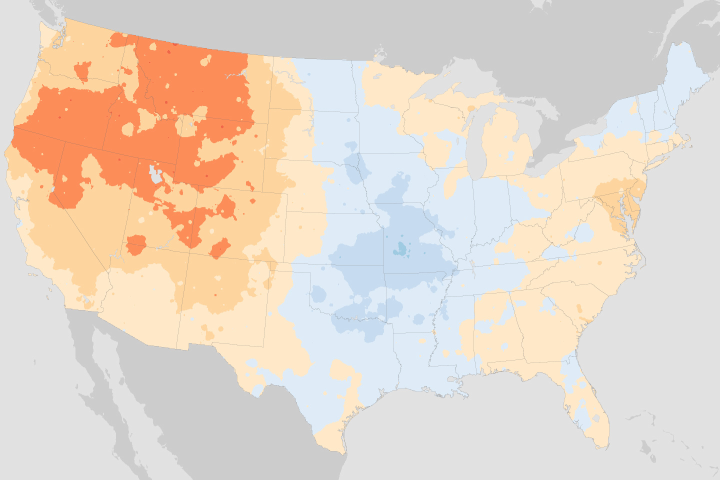In July 2011, NOAA’s National Climatic Data Center updated the U.S. Climate Normals: three-decade averages of weather observations, including temperature. The new annual normal temperatures for the United States reflect a warming world.
The maps below show the differences between the old normals and the new normals. The top image shows July maximum temperatures, and the bottom shows the January minimum temperatures. Positive temperature changes appear in orange and red, and negative temperature changes appear in blue.


Comparing average temperatures year round, every state experienced warmer temperatures in 1981–2010 compared to 1971–2000.
On average, the contiguous United States experiences the lowest temperatures on January nights, and the highest temperatures on July days. Both January minimum temperatures and July maximum temperatures changed, but not by equal amounts.
Parts of the Great Plains, Mississippi Valley, and the Northeast experienced slightly cooler July maximums from 1981–2010 compared to 1971–2000 (top map). A much more striking difference, however, appears in the January minimums (bottom map). Nighttime temperatures in January were higher everywhere except the Southeast. Warmer nights were especially pronounced in the northern plains through the northern Rocky Mountains—several degrees warmer in some places.
Following procedures set by the World Meteorological Organization, normals shift each decade, rather than each year. As of July 2011, the climate normals span 1981–2010, dropping the 1970s, which were unusually cool. Last year, the normals included 1971–2000, leaving out the warmest decade on record (2001–2010).
Bottom line: In July 2011, NOAA’s National Climatic Data Center updated the U.S. Climate Normals in July 2011. The new annual normal temperatures for the United States reflect a warming world. Comparing average temperatures year round, every state experienced warmer temperatures in 1981–2010 compared to 1971–2000.











